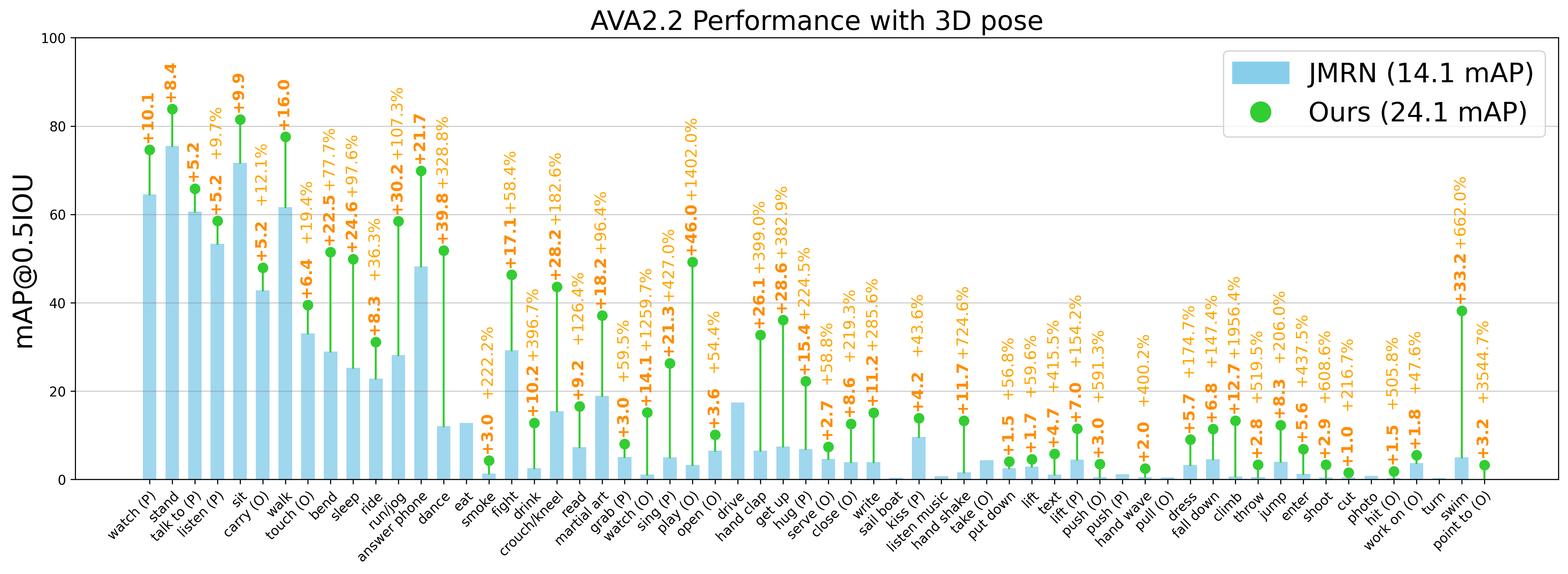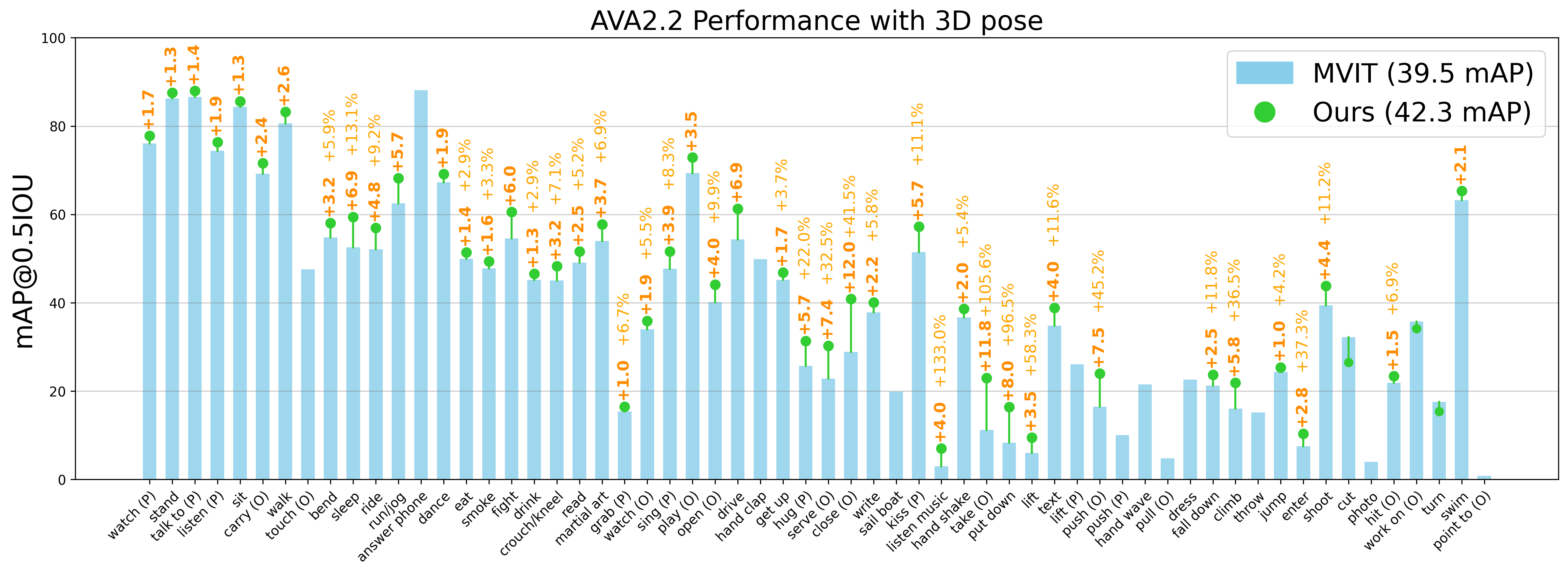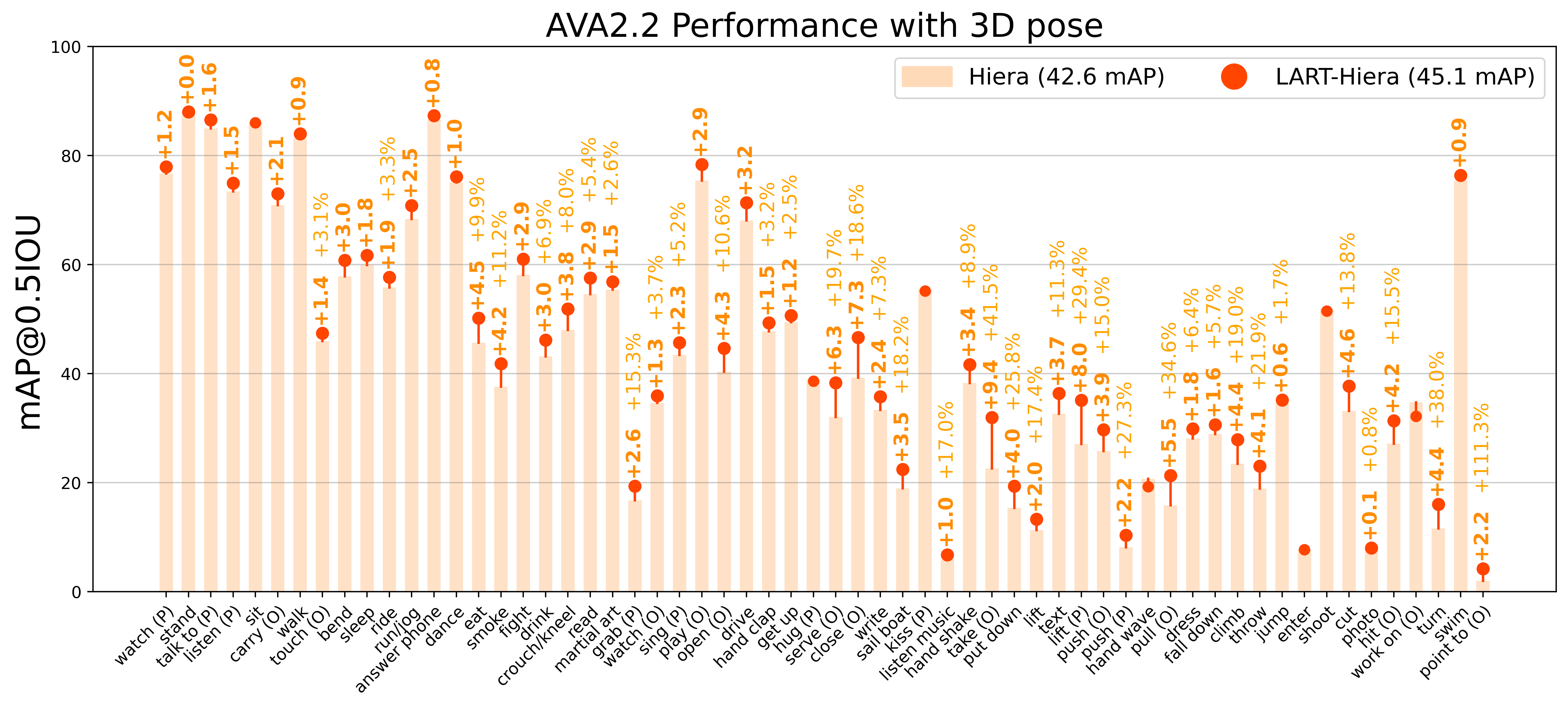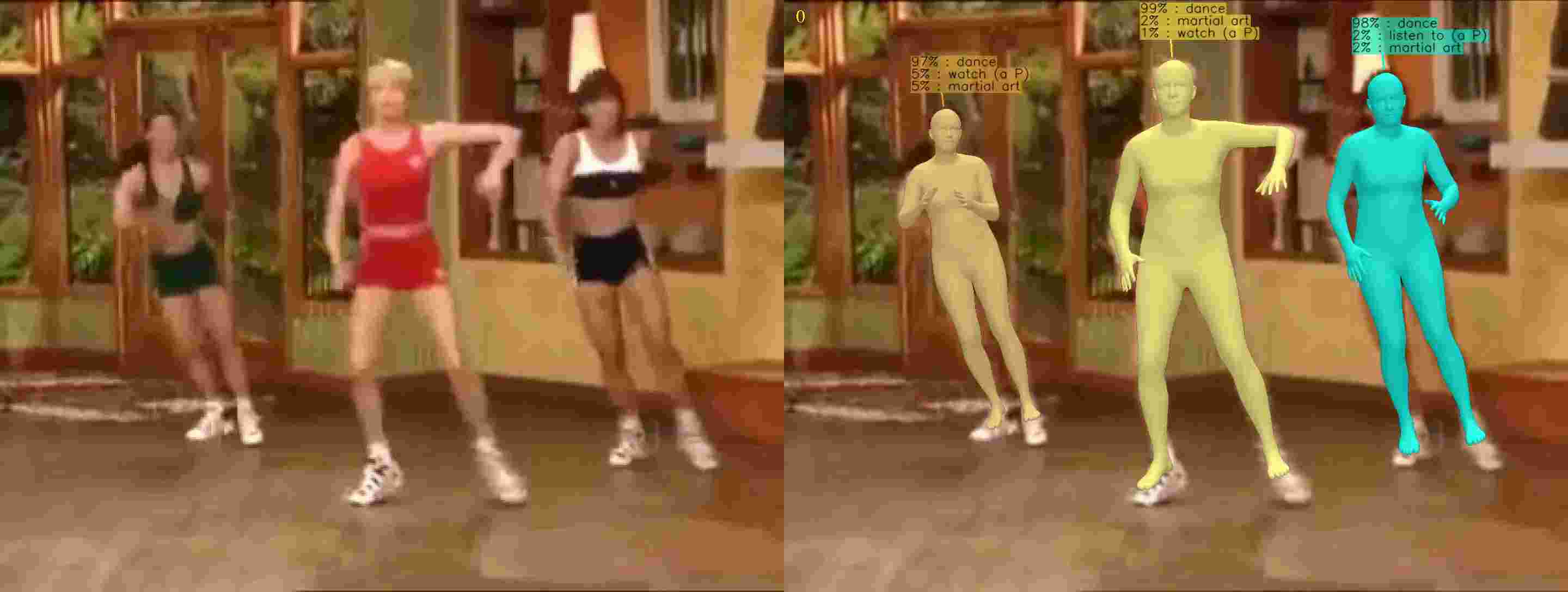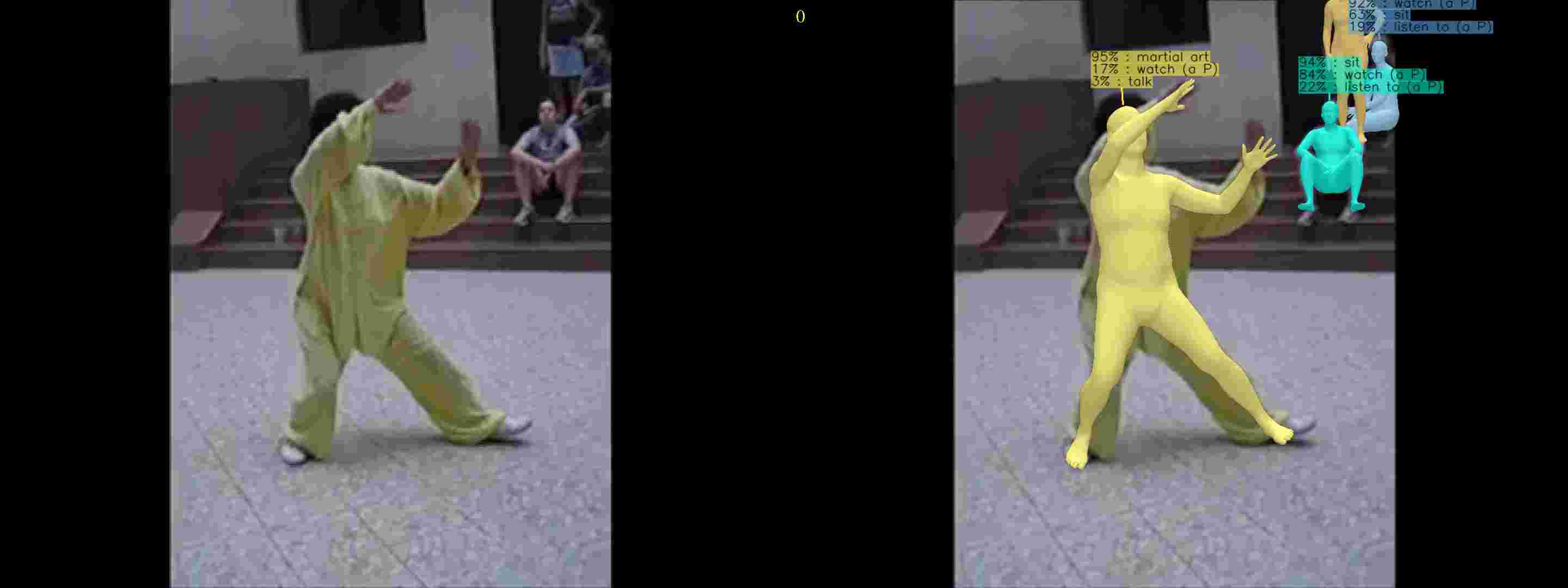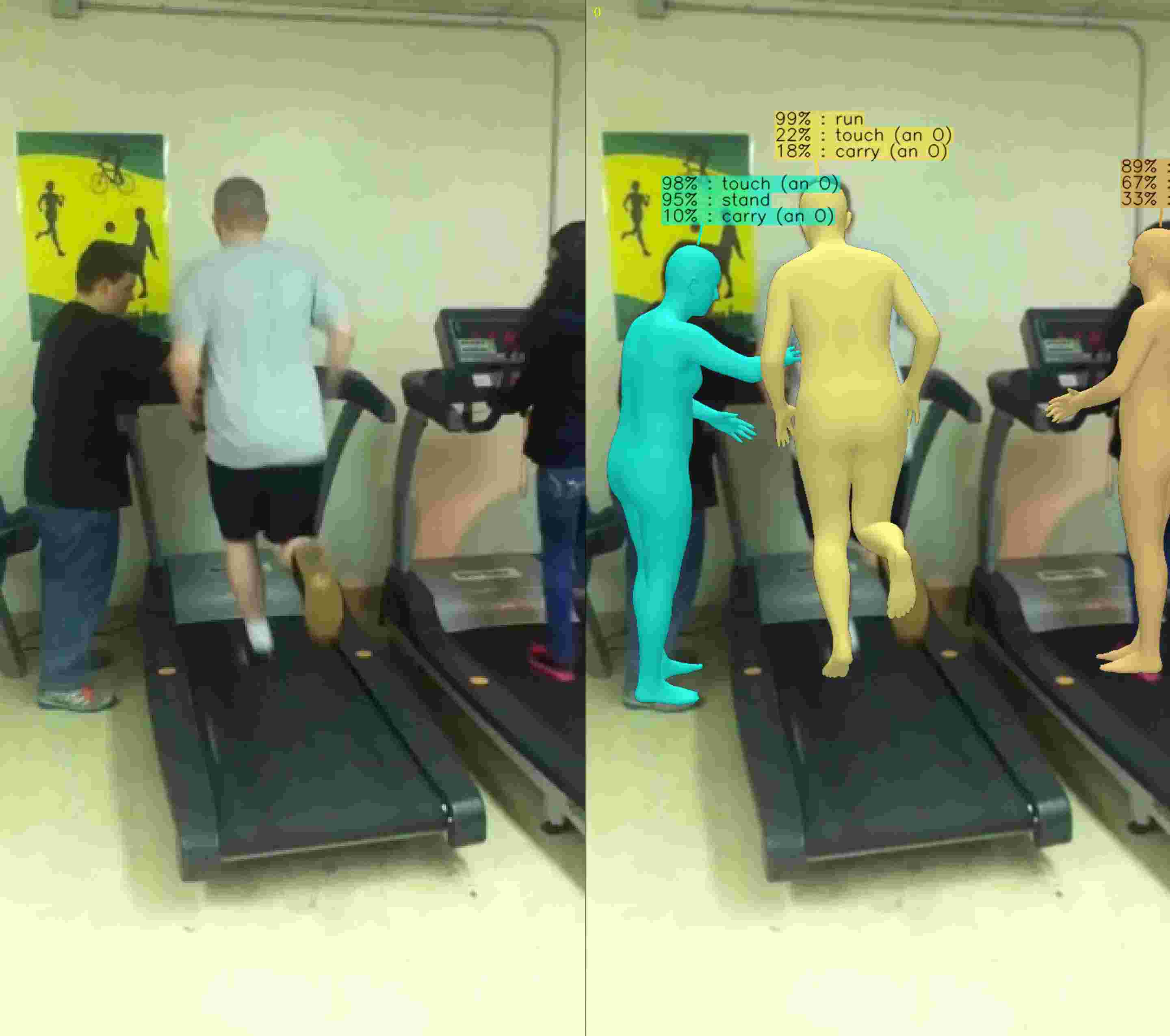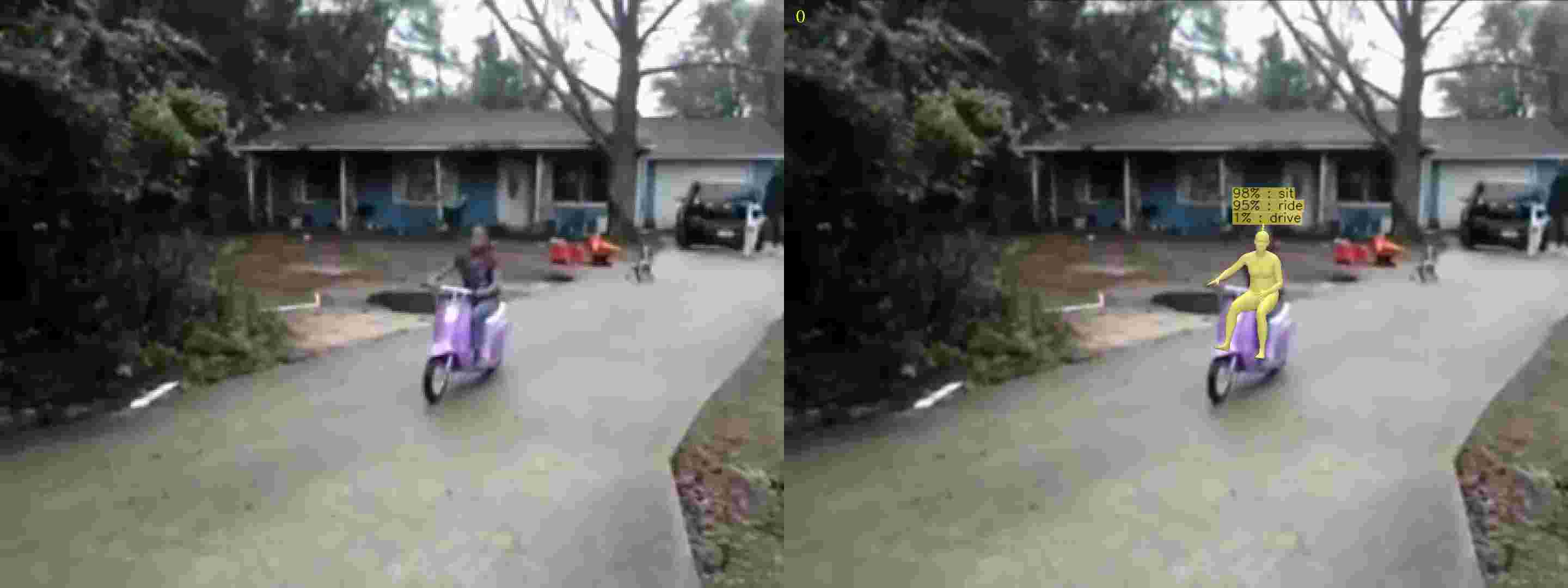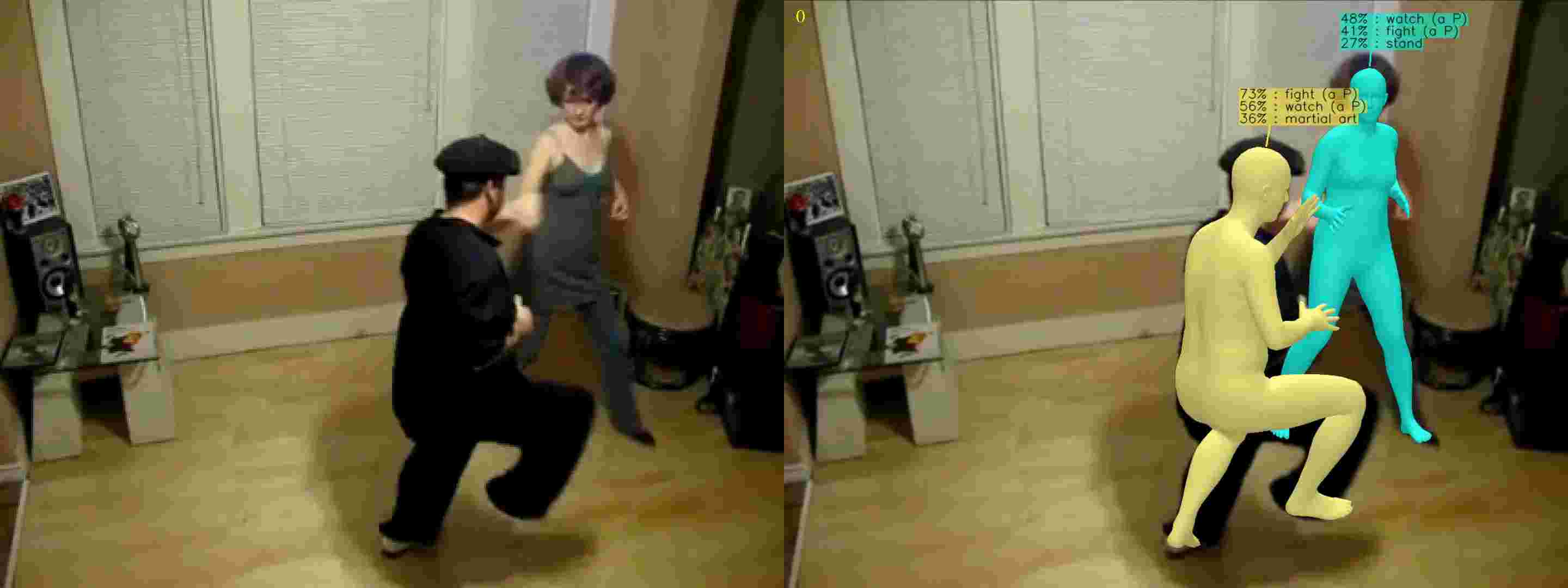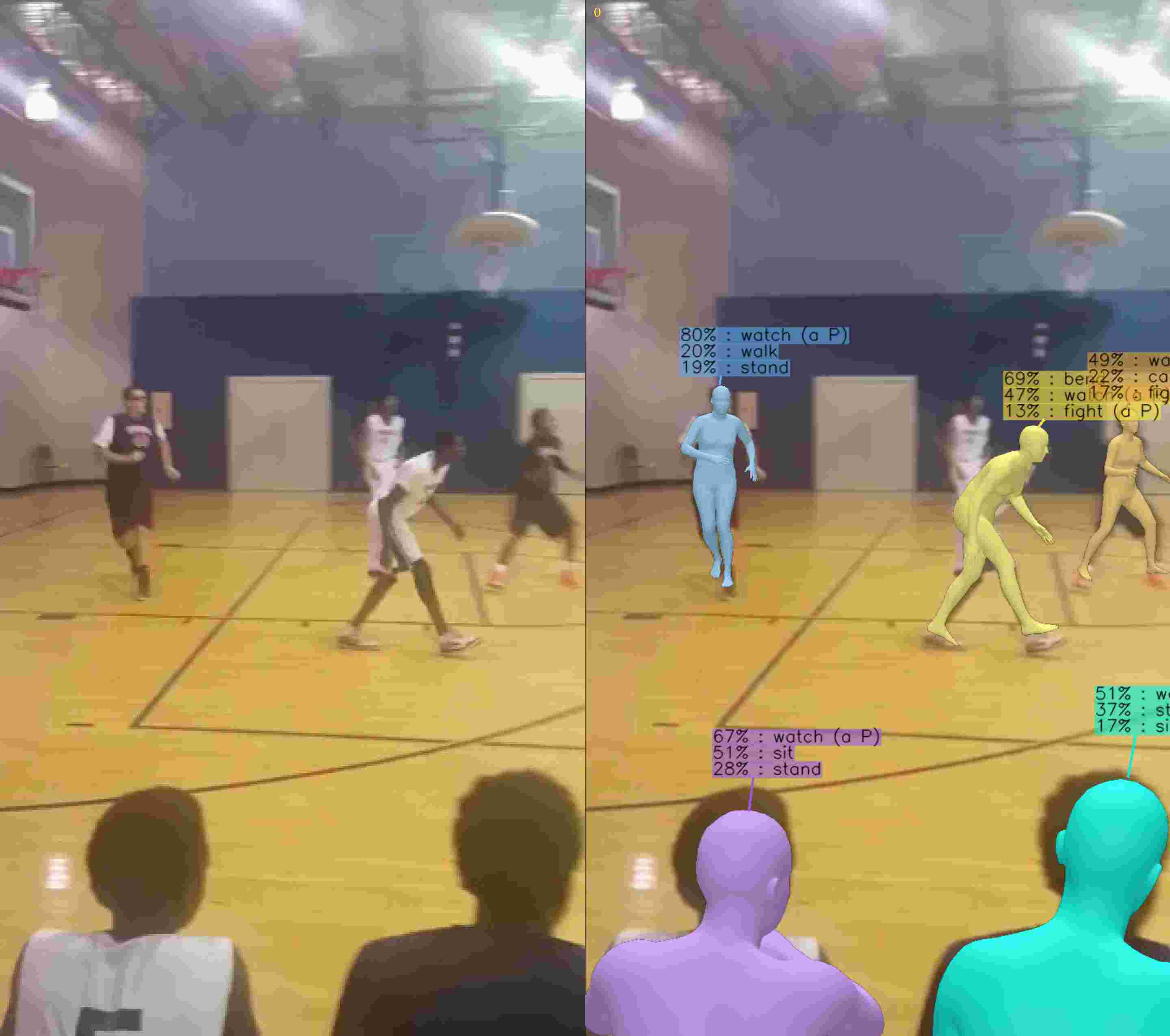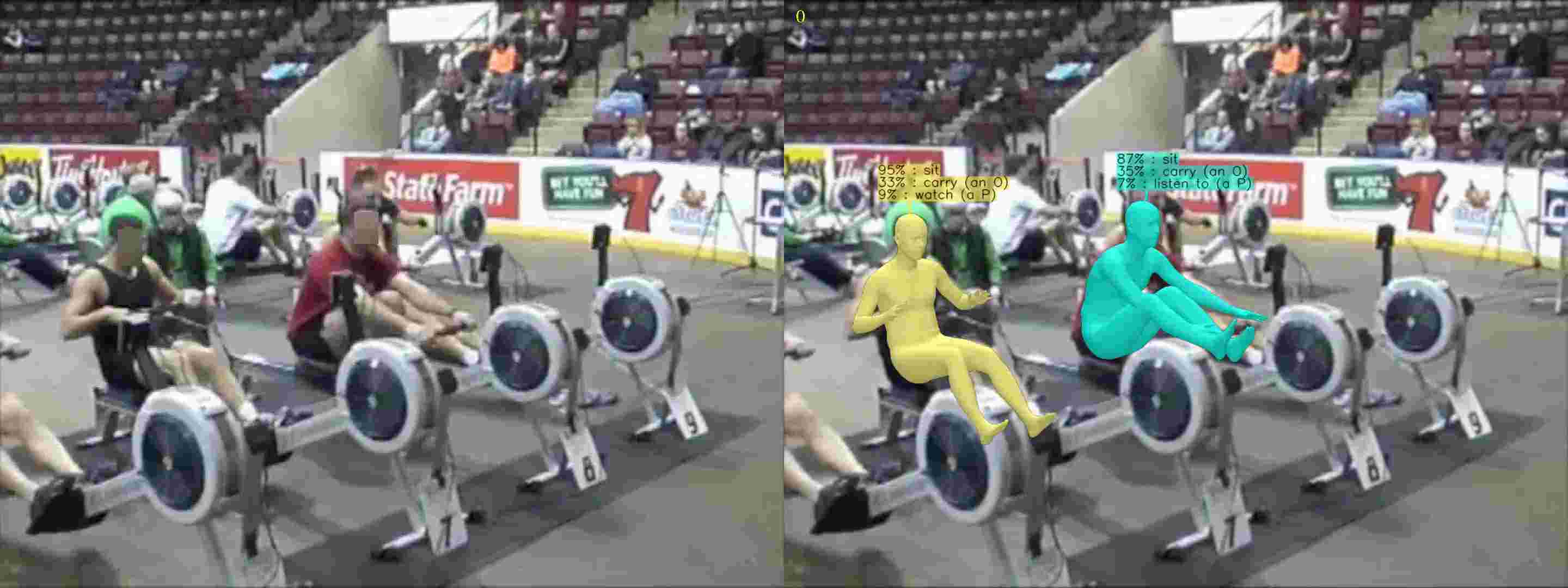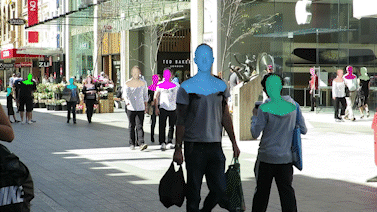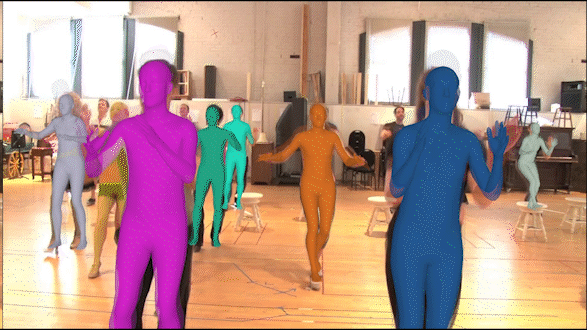Lagrangian Action Recognition with Tracking (LART)

Given a video, first, we track every person using a tracking algorithm (e.g. PHALP). Then every detection in the track is tokenized to represent a human-centric vector (e.g. pose, appearance). To represent 3D pose we use SMPL] parameters and estimated 3D location of the person, for contextualized appearance we use MViT (pre-trained on MaskFeat]) features. Then we train a transformer network to predict actions using the tracks. Note that, at the second frame we do not have detection for the blue person, at these places we pass a mask token to in-fill the missing detections.
